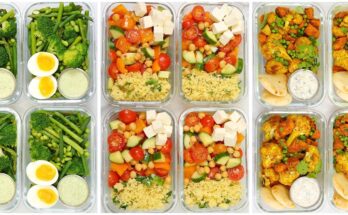Homemade Tomato Soup Recipe: Tomato soup is the culinary equivalent of a warm hug. There’s something inherently cozy about a bowl of homemade tomato soup, especially when it’s steaming hot and served with a crispy grilled cheese sandwich. Unlike the store-bought versions, homemade soup is free from preservatives, artificial flavors, and excess salt. It’s packed with real ingredients and authentic taste that takes you back to your childhood kitchen, where love and aroma filled the air.
The beauty of homemade tomato soup lies in its simplicity. With just a handful of fresh, pantry-friendly ingredients, you can whip up a meal that’s nourishing, flavorful, and comforting. Plus, it’s incredibly versatile. Whether you prefer it silky-smooth or rustic and chunky, there’s a way to make it uniquely yours.
Not only is tomato soup easy to prepare, but it also brings out the rich, tangy sweetness of tomatoes like no other dish. Add in a few spices, herbs, or even a splash of cream, and you’ve got a gourmet experience without the restaurant bill.
Nutritional Benefits of Tomato Soup
Homemade tomato soup is more than just delicious—it’s a nutritional powerhouse. Tomatoes are rich in antioxidants, particularly lycopene, which has been linked to reduced risks of heart disease and cancer. They’re also an excellent source of Vitamin C, potassium, folate, and Vitamin K.
One serving of tomato soup can help you meet your daily vegetable intake, especially if you add in carrots, onions, and celery as part of the soup base. The soup is typically low in calories, making it a smart choice for those watching their weight or aiming for a balanced diet.
And if you’re concerned about your immune system, here’s a bonus: Vitamin C in tomatoes boosts immunity and helps fight off colds. Add a garlic clove or two, and now you’ve got an anti-inflammatory, immune-boosting elixir that tastes as good as it is for your health.
Ingredients You’ll Need
Fresh and Simple Ingredients List
For a classic homemade tomato soup, you don’t need a lengthy grocery list. Most of these ingredients are likely already in your kitchen:
- 2 lbs fresh ripe tomatoes (Roma or vine tomatoes are great)
- 1 large onion, diced
- 3 cloves garlic, minced
- 2 tbsp olive oil or butter
- 2 cups vegetable broth (or chicken broth for non-vegetarian version)
- 1 tsp sugar (optional, to balance acidity)
- Salt and pepper to taste
- 1/4 cup heavy cream (optional for creamier texture)
- Fresh basil leaves for garnish
This basic lineup creates a well-balanced, rich, and savory soup that lets the tomato flavor shine through.
Choosing the Best Tomatoes for Your Soup
The quality of your tomatoes can make or break your soup. While canned tomatoes are a decent fallback, fresh tomatoes are the gold standard for flavor. Choose ripe, juicy tomatoes that are firm but not hard. Roma tomatoes are ideal because they are meatier and less watery, which means a thicker, more flavorful soup.
If tomatoes are out of season, opt for San Marzano canned tomatoes. They are considered the best in the world for sauces and soups, with a naturally sweet and intense tomato flavor.
Also, consider roasting your tomatoes beforehand. Roasting brings out their natural sweetness and adds a smoky depth that can take your soup to a gourmet level with minimal effort.
Kitchen Tools Required
Basic Tools for Beginners
You don’t need a chef’s kitchen to make tomato soup. Just a few basic tools will do:
- Large saucepan or Dutch oven
- Sharp knife and cutting board
- Wooden spoon
- Blender or immersion blender
- Measuring cups and spoons
These are the essentials to get your soup from raw ingredients to a beautifully blended masterpiece.
Optional Gadgets to Enhance the Process
If you’re a kitchen gadget enthusiast, here are a few optional tools that can make life easier:
- Tomato peeler for easily removing skins
- Food mill for ultra-smooth texture
- Soup pot with built-in strainer lid
- Garlic press for consistent flavor
These aren’t necessary, but they can certainly streamline your cooking and elevate the quality of your soup.
Step-by-Step Instructions
Step 1: Prepping the Tomatoes
Let’s start with the heart of the dish: the tomatoes. Begin by washing them thoroughly under cold water. If you prefer a smoother soup, you can peel the tomatoes. To do this, score a small “X” at the bottom of each tomato, then blanch them in boiling water for about 30 seconds. Immediately transfer them to an ice bath—the skins will peel right off.
Once peeled, cut the tomatoes into quarters and remove the cores. If you’re looking for an even richer flavor, consider roasting them in the oven at 400°F (200°C) for 20–25 minutes. Drizzle with olive oil and sprinkle with salt and pepper before roasting. This step caramelizes the natural sugars in the tomatoes, adding depth to your soup.
Roasted or fresh, your tomatoes are now ready to be transformed into soup.
Step 2: Sautéing the Base
Next, heat olive oil or butter in a large pot over medium heat. Add diced onions and sauté for 5–7 minutes until they’re soft and translucent. This is your flavor foundation, so don’t rush it.
Toss in the minced garlic and stir constantly for about a minute until fragrant. Be careful not to burn the garlic—it turns bitter fast. Some people also like to add a chopped carrot or celery stick at this stage for added sweetness and depth.
Once your base is sautéed to perfection, add the prepared tomatoes. Stir everything together, allowing the juices to release and the ingredients to meld.
Step 3: Simmering to Perfection
Now it’s time for the magic to happen. Pour in the vegetable or chicken broth and bring the mixture to a boil. Once boiling, reduce the heat and let it simmer for about 20–30 minutes. This gives all the ingredients time to break down and marry into a harmonious blend.
During this time, you can add a pinch of sugar to balance out the acidity of the tomatoes. Also, sprinkle in some salt and freshly cracked black pepper. If you’re a fan of herbs, this is a good moment to throw in a bay leaf or a few sprigs of thyme.
Keep an eye on the pot and stir occasionally to prevent anything from sticking to the bottom.
Step 4: Blending for Creamy Texture
Once the soup has simmered and the tomatoes have softened completely, it’s blending time. If you’re using a countertop blender, let the soup cool slightly before transferring it in batches. Blend until smooth.
Alternatively, an immersion blender lets you blend everything right in the pot—no need for transferring hot liquids. Blend until the soup reaches your desired consistency. Some like it perfectly smooth; others prefer a bit of texture.
At this point, if you want a creamier soup, stir in some heavy cream or coconut milk. This not only enhances the texture but also balances out the acidity with a subtle richness.
Step 5: Seasoning and Final Touches
Now that you’ve blended your soup to perfection, taste it. Adjust the seasoning with more salt, pepper, or herbs if needed. A splash of balsamic vinegar or a dash of hot sauce can add a unique kick.
Simmer the soup for another 5 minutes to meld the final flavors. Then turn off the heat and let it sit for a couple of minutes before serving. This little rest period helps the flavors settle.
Ladle the soup into bowls and garnish with fresh basil, a drizzle of cream, croutons, or even shredded cheese. Your homemade tomato soup is now ready to impress.
Customization Tips
Creamy vs. Chunky – Your Choice!
Everyone has a personal preference when it comes to texture. If you like your soup ultra-creamy, blend it longer and maybe even strain it through a fine mesh sieve. For a heartier version, blend just half and mix it back into the pot, keeping some chunks for a rustic vibe.
Want more substance? Add cooked pasta, rice, or white beans to the mix. These additions turn your soup into a filling, one-pot meal.
Vegan and Dairy-Free Options
Tomato soup can easily be adapted to fit vegan and dairy-free diets. Simply skip the cream or replace it with a plant-based alternative like coconut milk, almond milk, or soy cream.
Instead of butter, use olive oil or vegan butter for sautéing. And double-check your broth to ensure it’s completely plant-based. The result? A rich, velvety soup that’s 100% plant-powered and just as satisfying.
Serving Suggestions
Perfect Pairings: Grilled Cheese and More
Tomato soup is practically incomplete without a classic grilled cheese sandwich. The crispy, buttery bread and gooey melted cheese are the perfect complement to the tangy richness of the soup. But don’t stop there—there are plenty of other pairings that can take your meal to the next level.
Consider serving your soup with:
- Garlic bread – The robust flavors enhance the soup’s savory profile.
- Toasted baguette slices topped with olive tapenade or bruschetta mix.
- Cheese quesadillas for a Tex-Mex twist.
- Savory scones or biscuits—especially those flavored with cheese or herbs.
If you’re going light, a fresh garden salad with vinaigrette dressing can make a wholesome and balanced combo.
Hosting a dinner party? Serve tomato soup in small cups as an appetizer with a cheese platter on the side. It’s elegant and comforting at the same time.
Garnishing Ideas to Elevate Flavor
Never underestimate the power of a good garnish. It’s not just for presentation—it adds extra layers of flavor and texture. Here are a few garnish ideas that work wonders with homemade tomato soup:
- Fresh basil leaves – classic and aromatic
- Croutons – for a satisfying crunch
- A drizzle of cream or olive oil – adds richness and visual appeal
- Parmesan shavings – for a salty, umami boost
- Chili flakes or paprika – if you like a bit of heat
- Microgreens or parsley – for a fresh, green finish
Mix and match these to suit your taste and mood. A thoughtfully garnished bowl of tomato soup turns a humble dish into a restaurant-worthy experience.
Storing and Reheating Tips
How to Store Tomato Soup Properly
Made a big batch? No problem. Tomato soup stores beautifully, which means you can enjoy it all week. Once cooled, pour the soup into airtight containers. It will last:
- In the refrigerator for up to 5 days
- In the freezer for up to 3 months
If freezing, avoid adding dairy until you’re ready to serve. Cream can separate and affect texture after freezing. Instead, freeze the base soup and add cream after reheating.
Label your containers with the date so you know when it’s time to use them. For easy access, freeze soup in individual portions—perfect for quick lunches or lazy dinners.
Best Ways to Reheat Without Losing Flavor
When it’s time to reheat your soup, take care not to overcook it. Use a saucepan on the stove over low-medium heat. Stir frequently to prevent sticking and scorching. If the soup has thickened too much, add a splash of water or broth to loosen it up.
You can also microwave it in a microwave-safe bowl. Cover with a lid or plate to prevent splatters, and heat in 1-minute intervals, stirring in between. Again, add a touch of cream or seasoning if needed to freshen it up.
Proper reheating keeps your soup just as delicious as the day you made it.
FAQs about Homemade Tomato Soup Recipe
Can I use canned tomatoes?
Absolutely! If fresh tomatoes aren’t in season, canned tomatoes—especially San Marzano—work great. Just make sure they’re whole, peeled, and unsalted for best results.
How do I make it spicier?
Add a pinch of red chili flakes, cayenne pepper, or a dash of hot sauce during the cooking process. Roasted red peppers can also add a smoky heat.
What herbs work best in tomato soup?
Basil is a classic, but thyme, oregano, and bay leaves also pair beautifully. For a bold twist, try rosemary or even a touch of curry powder.
Can I freeze this soup?
Yes! Tomato soup freezes very well. Just store it in an airtight container and skip the cream until you reheat and serve. It’ll last up to 3 months in the freezer.
Is tomato soup good for weight loss?
It can be! Tomato soup is low in calories and rich in vitamins. Avoid adding too much cream or butter, and pair it with a salad for a light, nutritious meal.
FAQs about Homemade Tomato Soup Recipe
1. Can I use fresh tomatoes instead of canned ones?
Absolutely! Fresh tomatoes, especially ripe Roma or plum tomatoes, give a richer, more natural flavor. Just blanch and peel them first for best results.
2. How do I make tomato soup creamy?
To make it creamy, add a splash of heavy cream or coconut milk after blending. You can also stir in a dollop of sour cream or Greek yogurt for extra richness.
3. Is homemade tomato soup healthy?
Yes! Homemade tomato soup is packed with antioxidants like lycopene, especially when made without added sugars or preservatives. Use olive oil and low-sodium broth for a heart-healthy version.
4. Can I freeze homemade tomato soup?
Definitely. Let it cool completely, pour into freezer-safe containers, and freeze for up to 3 months. Thaw in the fridge and reheat gently on the stove.
5. What can I serve with tomato soup?
Classic pairings include grilled cheese sandwiches, garlic bread, or a simple green salad. For a hearty meal, add croutons or cooked pasta.
6. How do I thicken tomato soup naturally?
Simmer the soup uncovered to reduce the liquid. You can also blend in cooked potatoes, carrots, or even white beans for natural thickening and extra nutrition.
7. Can I make tomato soup without a blender?
Yes! Use a potato masher for a chunkier texture, or simmer longer and whisk vigorously to break down the tomatoes.
8. How long does homemade tomato soup last in the fridge?
Stored in an airtight container, it lasts 4 to 5 days. Reheat on low heat and stir occasionally to maintain texture and flavor.
9. Can I make tomato soup vegan or dairy-free?
Absolutely. Use vegetable broth and skip the cream or replace it with plant-based alternatives like oat cream or almond milk.
10. What herbs go best in tomato soup?
Basil, thyme, oregano, and bay leaves are popular choices. Fresh basil especially enhances the classic tomato flavor.
Conclusion
There you have it—a complete, step-by-step guide to making homemade tomato soup that’s comforting, flavorful, and downright irresistible. Whether you’re cooking for your family, prepping meals for the week, or simply craving something warm and nourishing, this tomato soup checks all the boxes.
Its simplicity is its strength. With a handful of fresh ingredients and a bit of love, you can turn everyday tomatoes into a bowl of heartwarming deliciousness. Don’t be afraid to get creative with toppings and pairings—this soup is your canvas.
So grab your apron, fire up the stove, and let the aroma of homemade tomato soup fill your kitchen. You’re not just making a meal; you’re creating a memory.



